Childhood Education Innovations
Celebrating 100+ Years of Publication!
Subscribe and receive Childhood Education Innovations magazine, bringing you cutting-edge innovations in children’s education from around the world.
 Childhood Education: Innovations is an education magazine that provides unique, stimulating information about educational programs around the world. Articles explore solutions to specific challenges affecting schools, teachers, and learners and showcase the most recent innovations being developed and implemented to address those challenges. Readers will find inspiration for transforming education to better serve children and society. Published 6 times a year, CE Innovations provides a window into the work being done to bring quality, equitable education to all children. It stands alongside the Journal of Research in Childhood Education as one of our signature publications.
Childhood Education: Innovations is an education magazine that provides unique, stimulating information about educational programs around the world. Articles explore solutions to specific challenges affecting schools, teachers, and learners and showcase the most recent innovations being developed and implemented to address those challenges. Readers will find inspiration for transforming education to better serve children and society. Published 6 times a year, CE Innovations provides a window into the work being done to bring quality, equitable education to all children. It stands alongside the Journal of Research in Childhood Education as one of our signature publications.
CONTENTS
November/December 2025
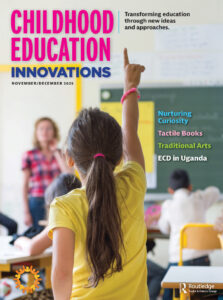
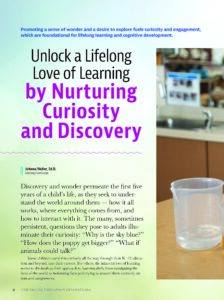 “Unlock a Lifelong Love of Learning by Nurturing Curiosity and Discovery”
“Unlock a Lifelong Love of Learning by Nurturing Curiosity and Discovery”
How can educators and caregivers in early child care environments nurture children’s curiosity and preserve their love of learning? They can do so by focusing on appreciation, attention, and intentionality. Children are full of excitement and energy about exploring the world around them, and have a limitless potential to learn. Because learning is a process of constructing meaning, every experience is a building block to a child’s development. Those collective experiences can build curiosity and joy – or stifle it. When young learners have opportunities to actively wonder, question, and connect knowledge broadly, they will view learning as an exploratory process. Recommendations provided in this article center on intentional design of units, purposeful activities, and meaningful play-based learning to cultivate an environment of curiosity and invite exploration.
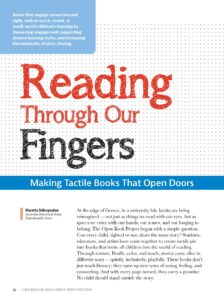
“Reading Through Our Fingers: Making Tactile Books That Open Doors”
At the edge of Greece, in a university lab, books are being reimagined — not just as things we read with our eyes, but as spaces we enter with our hands, our senses, and our longing to belong. The Open Book Project began with a simple question: Can every child, sighted or not, share the same story? Students, educators, and artists have come together to create tactile picture books that invite all children into the world of reading. Through texture, Braille, color, and touch, stories come alive in different ways — quietly, inclusively, playfully. These books don’t just teach literacy; they open up new ways of seeing, feeling, and connecting. And with every page turned, they carry a promise: No child should stand outside the story.
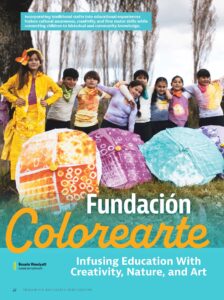
“Fundación Colorearte: Infusing Education With Creativity, Nature, and Art”
Colorearte began in 2004 as a school art competition and has since transformed into a nationwide educational program. Since then, it has benefited more than 260,000 students and 6,500 teachers in Chile and other Latin American countries. Each year, the program issues an open call to teachers of all educational levels and disciplines. Working with a common theme (one that changes annually and always links art to the environment), teachers and students create collaborative textile artworks. The program includes free distribution of materials, a pedagogical guide, video capsules, teacher support, and a final exhibition showcasing the completed works. All of this is provided at no cost to participating school communities. The free distribution of materials removes access barriers and enables schools without artistic infrastructure to participate on equal footing.
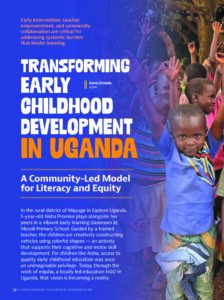
“Transforming Early Childhood Development in Uganda: A Community-Led Model for Literacy and Equity”
There is an urgent need for comprehensive early childhood development programs in rural Uganda — initiatives that not only provide access, but also deliver quality learning experiences. enjuba, an education social enterprise, is working to fill this gap through a sustainable, inclusive, and community-driven model aimed at improving literacy, numeracy, and executive function skills in young children. At the heart of enjuba’s early learning strategy is a pioneering lab preschool that offers high-quality early learning opportunities while also serving as a professional development hub for teachers and a site for action research on effective early childhood practices.
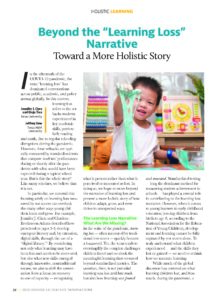
“Beyond the “Learning Loss” Narrative: Toward a More Holistic Story”
In the wake of the pandemic, learning loss — often measured by traditional test scores — quickly became a buzzword. Yet, the term tends to oversimplify the complex challenges children faced and overlook the meaningful learning that occurred beyond standardized metrics. The question, then, is not just what learning was lost and how much, but also how learning was framed and measured. Standardized testing — long the dominant method for measuring student achievement in schools — has played a central role in contributing to the learning loss narrative. However, when it comes to young learners in early childhood education, development and learning cannot be fully captured by test scores alone. To truly understand what children experienced — and the skills they lost or gained — we need to rethink how we measure learning.
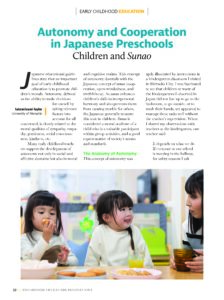
“Autonomy and Cooperation in Japanese Preschools: Children and Sunao”
Many early childhood teachers support the development of autonomy not only in social and affective domains but also in moral and cognitive realms. This concept of autonomy dovetails with the Japanese concept of sunao (cooperation, open-mindedness, and truthfulness). As sunao enhances children’s skills in interpersonal harmony and also prevents them from causing trouble for others, the Japanese generally treasure this trait in children. Sunao is considered a moral attribute of a child who is a valuable participant within group activities, and a good representative of society’s norms and standards.
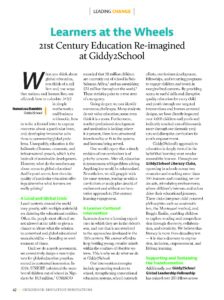
“Learners at the Wheels: 21st Century Education Re-imagined at Giddy2School”
In Sub-Saharan Africa, Giddy2School’s approach to education is deeply rooted in the belief that learning must revolve around the learner. Giddy2School Literacy Clubs, operating in schools across two countries and reaching more than 500 learners and counting, are safe, stimulating environments where children’s interests and voices drive their educational journeys. These clubs integrate child-centered philosophies such as constructivism, the Montessori method, and Reggio Emilia, enabling children to explore reading and comprehension through discovery, collaboration, and creativity.
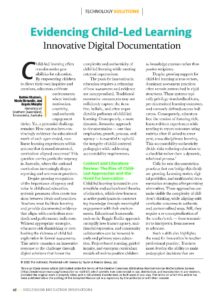
“Evidencing Child-Led Learning: Innovative Digital Documentation”
The push for innovation in education requires a reframing of how assessment and evidence are conceptualized. Traditional summative assessments may not sufficiently capture the iterative, holistic, and often unpredictable pathways of child-led learning. Consequently, a more dynamic, formative approach to documentation — one that emphasizes growth, process, and agency — is essential to uphold the integrity of child-centered pedagogies while addressing accountability requirements. The authors explored how educators might better document learning in a child-led environment while aligning with the Australian Curriculum.

“Gemini Storybook for Language Teaching and Learning”
Recent advances in generative artificial intelligence (AI) have introduced innovative features to storytelling that enable educators to create illustrated and narrated stories tailored to learners’ individual needs. One of the most innovative applications of generative AI in storytelling is Gemini Storybook, developed by Google as part of its Gemini suite and introduced in August 2025. Gemini Storybook redefines how narratives can be created and experienced in the classroom. Unlike traditional e-readers or earlier multimedia platforms, this new tool integrates advanced natural language processing, generative image creation, and text-to-speech synthesis to produce personalized, illustrated, and narrated storybooks.

“Assessing Young Children’s Mathematical Abilities Through Cooking Play”
While young children may have a good capacity for understanding numbers, they might only demonstrate this in meaningful contexts. Young children may struggle to align their practical mathematical experiences with formal learning in school, when mathematics rapidly transitions from the meaningful to the abstract. Games and family activities can be an effective way to address these challenges, helping children explore additional areas of mathematical understanding and enhancing the assessment of existing concepts. This article examines how cooking play might enhance children’s number sense while helping educators assess their abilities. Through cooking activities, parents or teachers can expose children to new mathematics experiences, terminology, and symbols.

“Student Enrichment in an Arts Desert: Professional Dance”
Cultural isolation occurs when cultures do not interact due to being physically separate or remote, but it also can occur when cultures elect not to interact. In urban areas, interconnected issues of poverty, social problems, culture clashes between teachers and students, racial tensions, and school funding disparities contribute to cultural isolation. Urban schools depend on community, family, and school partnerships to overcome such isolation. In rural areas, intertwined issues associated with academic background, career needs, poverty, social-emotional concerns, and student culture all contribute to cultural isolation. The resulting cultural and geographic isolation, coupled with a lack of community and school resources, creates barriers to rural students’ success. The program discussed in this article brought students in a rural Ohio community to cultural opportunities.
